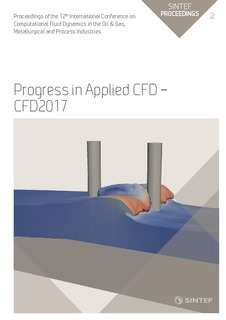| dc.contributor.author | Vik, Camilla Berge | |
| dc.contributor.author | Solsvik, Jannike | |
| dc.contributor.author | Engh, Mathias | |
| dc.contributor.author | Hillestad, Magne | |
| dc.contributor.author | Jakobsen, Hugo Atle | |
| dc.date.accessioned | 2018-01-28T13:24:49Z | |
| dc.date.available | 2018-01-28T13:24:49Z | |
| dc.date.issued | 2017 | |
| dc.identifier.isbn | 978-82-536-1544-8 | |
| dc.identifier.issn | 2387-4295 | |
| dc.identifier.uri | http://hdl.handle.net/11250/2480027 | |
| dc.description.abstract | With kinetic gas theory as a starting point, equations of change for total mass, species mass, momentum and inner energy are developed for the dispersed gaseous phase and implemented to describe the Fischer-Tropsch synthesis carried out at industrial scale. The resultant model describes bubble velocity, composition and temperature in the gaseous phase as function of axial position and bubble size. The bubble size is found from the population balance equation (PBE) using a continuous mass density function which is calculated explicitly and used as basis for the gas-liquid transfer fluxes of species mass, momentum and heat. In the Fischer-Tropsch synthesis reactants are transported from inside gas bubbles through the gas-liquid interface into the liquid phase and subsequently into the catalyst pores to form hydrocarbon products at the active sites on the catalyst surface. Higher catalyst loading requires a higher mass transfer from the gas bubbles to the liquid phase and may cause the overall reaction to become mass transfer limited. In order to optimize reactor design, knowledge of the bubble size may thus be of importance. The liquid and solid phases are modelled using conventional continuum mechamics equations of change. The results of the simulations show that the weight percent of reactant varies by 20 percentage points from the smallest to the largest bubble size and thus a significant level of detail is added to the model when including bubble size in the mass fraction variable. For temperature the particle size dependency is negligible at the same conditions. It is noted that firm conclusions on the mass and heat transfer limitations can only be drawn when reliable estimates of the transfer coefficients are available. | |
| dc.language.iso | eng | |
| dc.publisher | SINTEF Academic Press | |
| dc.relation.ispartof | Progress in Applied CFD – CFD2017 Selected papers from 12th International Conference on Computational Fluid Dynamics in the Oil & Gas, Metallurgical and Process Industries | |
| dc.relation.ispartofseries | SINTEF Proceedings;2 | |
| dc.subject | Population balance methods | |
| dc.subject | Chemical reactors | |
| dc.subject | Slurry bubble column | |
| dc.subject | Mulitphase mass transfer | |
| dc.subject | Fischer-Tropsch synthesis | |
| dc.subject | Bubble size | |
| dc.title | A multifluid‐PBE model for a slurry bubble column with bubble size dependent velocity, weight fractions and temperature | |
| dc.title.alternative | Progress in Applied CFD. Selected papers from 10th International Conference on Computational Fluid Dynamics in the Oil & Gas, Metallurgical and Process Industries | |
| dc.type | Chapter | |
| dc.type | Conference object | |
| dc.type | Peer reviewed | |
| dc.description.version | publishedVersion | |
| dc.subject.nsi | VDP::Technology: 500 | |
